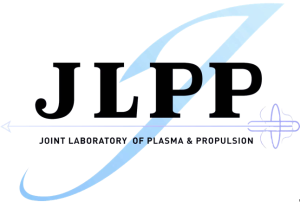Our research
Discrete element Method (DEM) for lunar dust
The JLPP research team conducted systematic modeling of lunar dust environment simulation focusing on both anthropogenic and natural disturbances.
For anthropogenic disturbances, the study centered on two primary scenarios:
A multi-physics coupled model of spacecraft engine plume impingement on the lunar surface, analyzing the characteristics and diffusion patterns of charged lunar dust;A discrete element model of lunar rover-induced dust mobilization, investigating electrostatic adhesion and low-gravity sedimentation under wheel-soil interaction.
Natural disturbance research encompassed:
The abrupt electrostatic field variation at the lunar terminator, where a solar wind-lunar surface-dust plasma model was developed to analyze the levitation mechanism driven by photoelectron emission;Anomalous geomagnetic environments, specifically simulating the Lorentz force effects on charged dust trajectories and accumulation patterns in localized lunar magnetic anomalies.A multi-scale coupling algorithm was employed to bridge microscopic charging processes with macroscopic dust evolution, supporting the design of protective measures for lunar explorers.
For plasma environment simulation, the Particle-in-Cell (PIC) method was adopted. Through sheath layer modeling, macro-particle initialization, and experimental validation, the study achieved high-fidelity simulation of dust charging dynamics and motion trajectories. Phase-specific analysis was conducted to examine the force characteristics of numerous particles under solar irradiation and plasma conditions.
anthropogenic disturbances
- A multi-scale CFD-DSMC-DEM coupled simulation framework was established, incorporating PIC-based particle simulation to model the lunar surface electric field and dust charging dynamics. This charged dust motion simulation model accounts for the post-charging behavior of lunar dust under the space environment near the Moon’s surface. The study analyzes the dynamic characteristics of lunar dust under high-speed plume impingement from Chang’e-series lunar lander engines, revealing the mechanisms of dust lifting, dispersion, and impact under multi-physics coupling conditions.

Figure 1 Plume-induced dust simulation
- Based on the EDEM discrete element simulation platform, a comprehensive dynamic model of lunar rover-induced dust mobilization was established, acquiring critical parameters including dust particle velocity distribution, motion trajectories, and dispersion range. Through refined modeling of wheel-regolith interaction mechanisms, the study incorporated low-gravity effects, electrostatic adhesion, and particle fragmentation behavior of lunar soil, enabling numerical reconstruction of dust mobilization processes under various operational conditions. The simulation results provide essential data support for optimizing lunar rover design and developing dust mitigation strategies.

Figure 2 Lunar rover dust mobilization
Natural disturbance
- A coupled sheath-dust dynamic model was developed based on plasma charging effects, incorporating lunar surface electromagnetic fields, solar irradiation, and solar wind plasma environments to establish dust charging mechanisms. The model integrates solar wind plasma-dust charging interactions, sheath-layer electric field distributions, and charged dust transport dynamics. Through numerical simulations, it enables quantitative prediction of charged dust trajectories and spatial distributions under sheath-layer electric fields, providing a robust theoretical framework for analyzing lunar dust migration phenomena.

Figure 3 Electric potential distribution at varying altitudes above lunar surface (solar incidence angle = 10°)

Figure 4 Contour map of electric potential distribution
(Lastly Updated in July, 2025)
